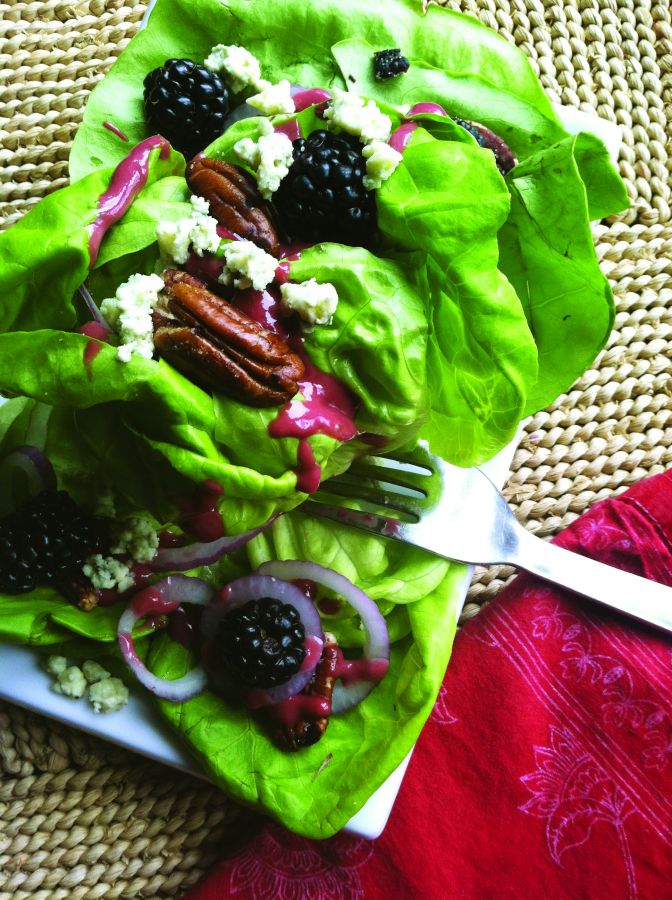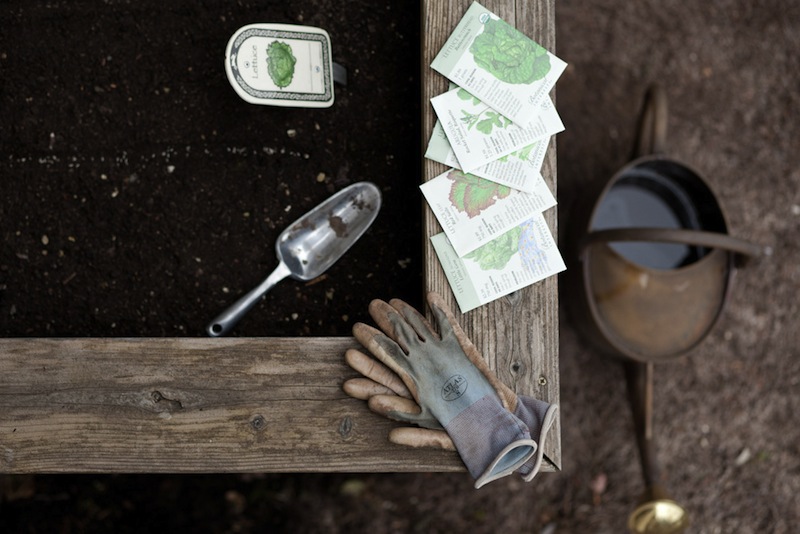written by Tricia Louvar | photos by Rob Kerr
The Process was underway before the sun came up in Central Oregon.
The Madras farmhouse’s yellow lights cut a slice in the black morning sky at the Symons Beef Company. Almost 60 miles to the south in Sisters, Jeff Johnson, co-owner of Sisters Meat and Smokehouse, filed through his email inbox, managing the underbelly of the small-town startup.
Both small businesses operate on similar principles—be reliable, show integrity and maintain consistency. One raises the meat, the other serves the meat. From hoof to home, this story chronicles a cycle of local beef in Oregon.
JoHanna Symons, 36, leaned back and looked out her pickup truck’s window. The Symons own the land all the way to the skyline, she said. There are six homes scattered on the property used as employee living quarters. Hay sheds speckle the landscape. Irrigation pivots, twelve towers long, spray an allotment of water that her husband, Jeremy Symons, 42, ordered at the beginning of the season.
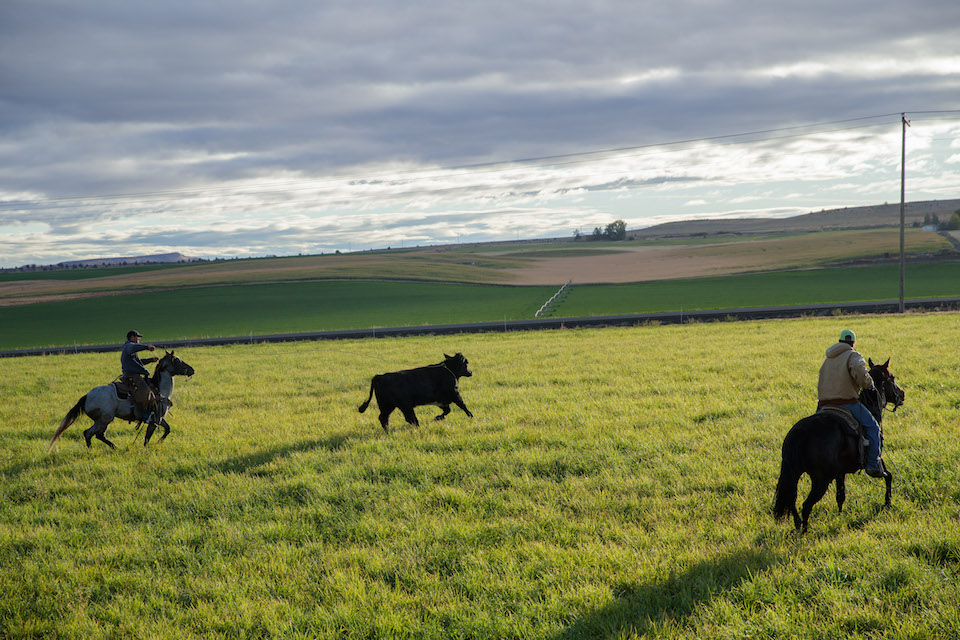
In 2014, Jeremy and JoHanna Symons from Madras won Jefferson County’s “Livestockmen of the Year.” This duo has worked for the past ten years growing Symons Beef Company. Their ranching life started from about 10 acres to farming more than 1,000 acres, now running thousands of cattle a year, owning fifty bulls, managing almost ten employees and raising their three kids.
Everything on the Symons ranch and farm is calculated. “We have 700 mother cows. We also cooperate with farmers for crops and tie up with cattle,” JoHanna said. “By a year’s end, we’ll have managed 7,000 cattle, which is considered a small operation. There are some ranches with 100,000 head.”
Symons Beef Company cattle live and graze on plots at Smith Rock in Terrebonne and Fopiano Ranch in Mitchell, some 70 miles apart. “Ninety percent of our cattle’s lives are on the grass out there in the sagebrush and trees,” JoHanna said. Once calves are about six months, they ween off their mothers and are brought to the Symons’ ranch to “finish them” for slaughter. They come to the ranch weighing 600 to 800 pounds and don’t load the truck for slaughter until they reach 1,300 pounds.
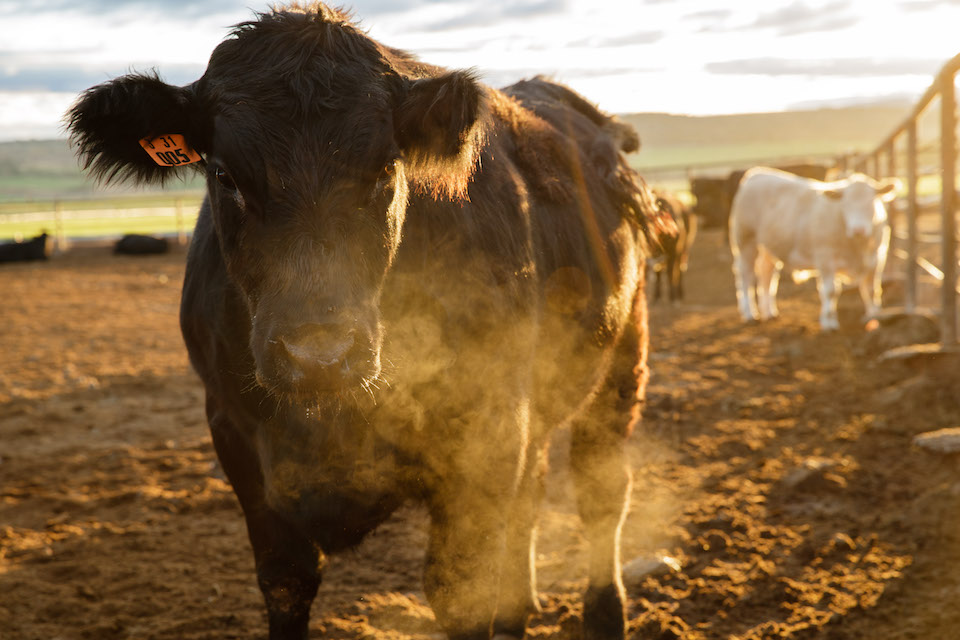
It takes months for cattle to double their weight. “With hormone injections, you could get a calf to gain 6 pounds a day, but we don’t do that,” JoHanna said. “Whereas our cattle only gain 1, maybe, 3 pounds a day on our grain finish, we have the calves here much longer before they move on.”
Their feed operation works in tandem with an animal nutritionist to ensure the cattle have the appropriate nutrition. “The nutritionist formulates all of the food rations for us at the farm, depending if we need the animal to gain 1 pound or 3 pounds a day,” JoHanna said. The feed lot has a “mixing bowl” so large it fills a dump truck of rations in the cattle pens.
Jeremy knows which pen gets what based on the number of cattle and the food they require. The mixing bowl dumps triticale, corn and alfalfa hay into the appropriate pens.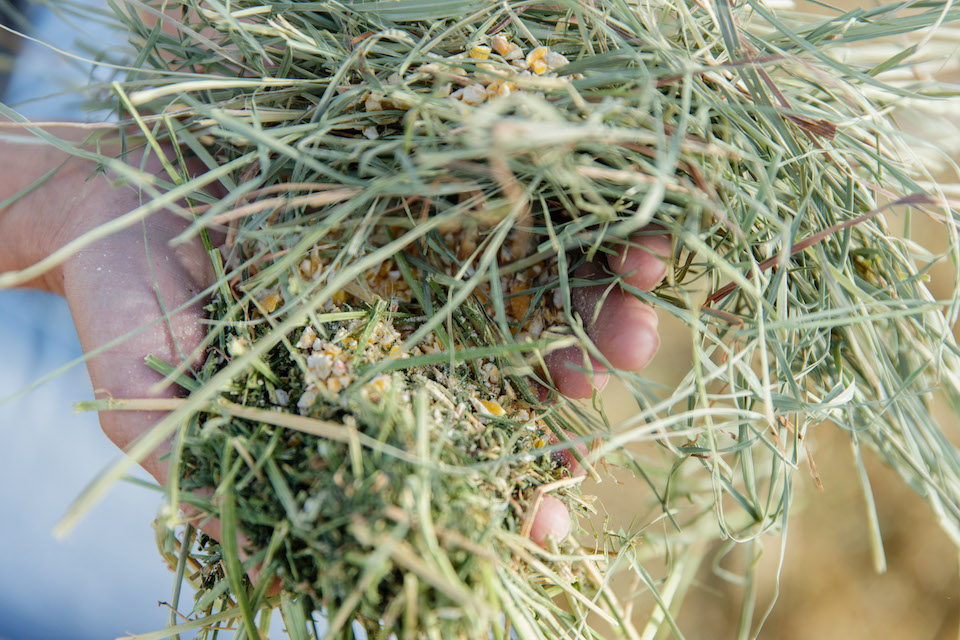
All of the feed comes from the Symons’ farm for a contained ecosystem to grow the cattle. From the ground up, quality remains key to their venture. “We have to cut alfalfa at night because the moisture gets sucked out of the ground and goes into the leaves and keeps the leaves attached to the stems, so it seals in all the proteins,” JoHanna said. The Symons have so many fields, it takes Jeremy twenty-two straight days of work—from 11 p.m. to 4 a.m.—to plow the alfalfa. He does this three times during the summer, consuming two-thirds of the season. He farms at night and cattle ranches during the day.
Once the cattle are back near the feed yard, cowboys exercise the cattle every day. “Animals are meant to be free and grazing on a hillside,” JoHanna said. The life cycle and the well-being of the animal require intensive day-to-day observation before being trucked to Kalapooia Valley Grass Fed Processing in Brownsville. Kalapooia is a state-of-the-art facility that follows humane handling guidelines. Symons said Kalapooia is able to sustain its volume for now.
“I want to do about thirty animals a week, which is about 50,000 pounds of product a week,” Symons said. “Our goal is to build a slaughter plant on the ranch so the cattle can just walk from the fields and pens into the facility.”
Such a facility would make the Symons Beef Company a closed-loop system in the beef life cycle. For now, the meat is hauled back from Brownsville to Madras, then delivered to vendors in Central Oregon and Portland.
Brothers in Sisters
“Excuse me, buddy, could you move that back a little, as we’re going to use the grinder?” Brody Waller of Sisters Meat and Smokehouse asked his meat delivery man. The delivery man put the hand pallet truck in reverse and moved the meat product farther away from the meat locker.
Jeff Johnson and Kay, his wife of thirty-two years, started the Smokehouse after years of receiving gifts of smoked meats from Waller, a relative of the Johnsons. “At Christmas, he gave us the smoked turkey, pepperoni and jerky,” Kay Johnson said. “We told him, ‘If you ever want to start a business, we will back you.’”
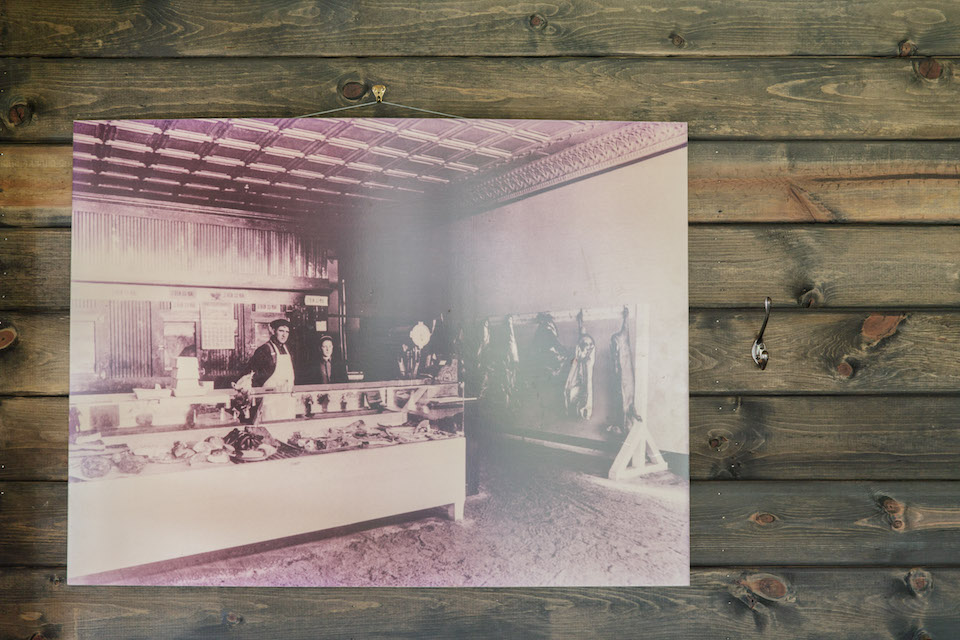
After years of negotiation, they reached a deal. Waller and his older brother, Wade Waller, a professional meat cutter, came together. “I supported the vision,” Jeff Johnson said. “These guys have a gift, and frankly, wanted to see it through and wanted to bring a cool business to Sisters.”
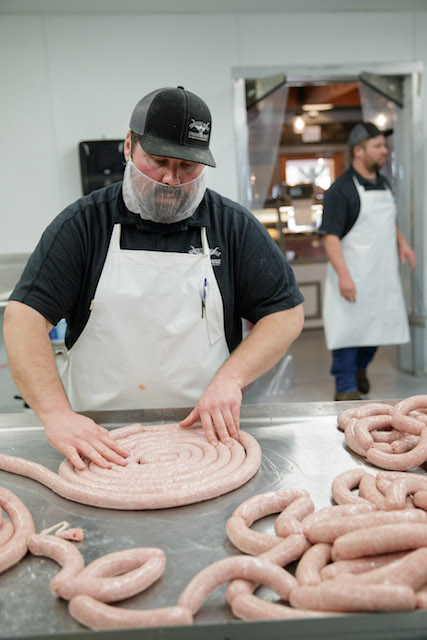
Brody, 32, who worked in seasonal construction in Alaska for twelve years, came back to the Willamette Valley each winter where he worked on smokehouse recipes and products, building off his father’s legacy. Their father started the smokehouse program in the mid-1970s, selling into Dee’s Market and Price Less Foods, then retired from the business fifteen years ago.
As a kid in early grade school, Brody remembered being at his dad’s meat shop, where he learned how to cut frozen half chickens. “When my dad started, he would go cut the meat off the hanging carcass. He’d go to the back and cut off the T-bone,” he said. “When Wade entered the business, that was all ending and they started bringing in just primal cuts.”
In the United States, primal cuts are the segments of meat taken off the carcass—including rib, round, chuck and loin. Grass, grain finish and exercise during the cow’s life all contribute to a meat cut’s tenderness and toughness. The more work a cow’s body part endured, the more that cut of meat will be tougher and laced with connective tissue. So, the eye of round from the hind legs is tougher than, say, the abdominal tenderloin or ribeye, because of its muscular use.
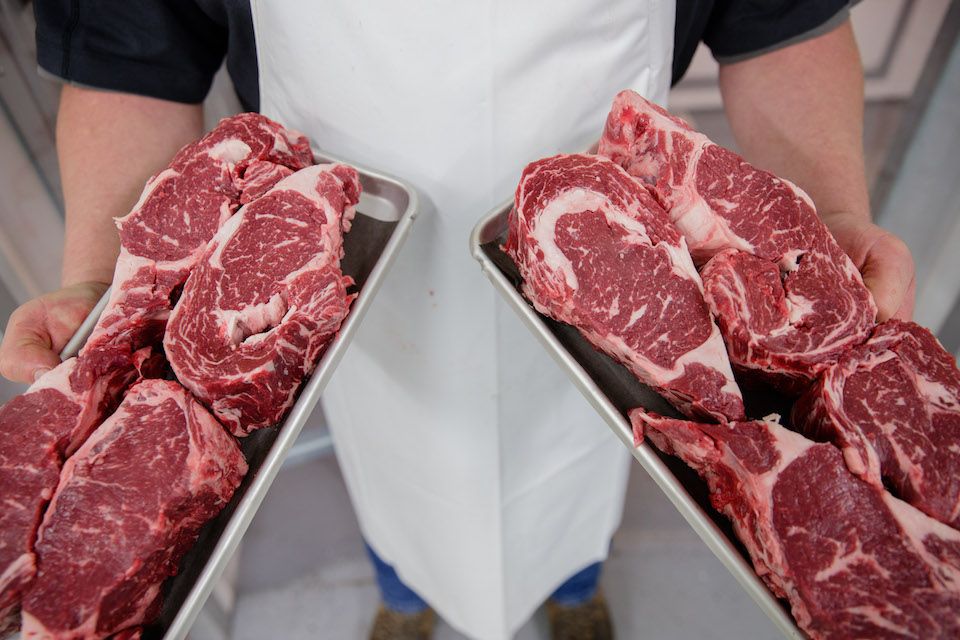
In the meat delivery comes the Symons Beef Company order. “We were looking for a local source, and we tried out a number of them, and they just didn’t have something right,” Jeff Johnson said. “What I’m looking for is someone who knows what outcome they’re going to get and knows they can repeat it. And then we found the Symons—they are fantastic.”
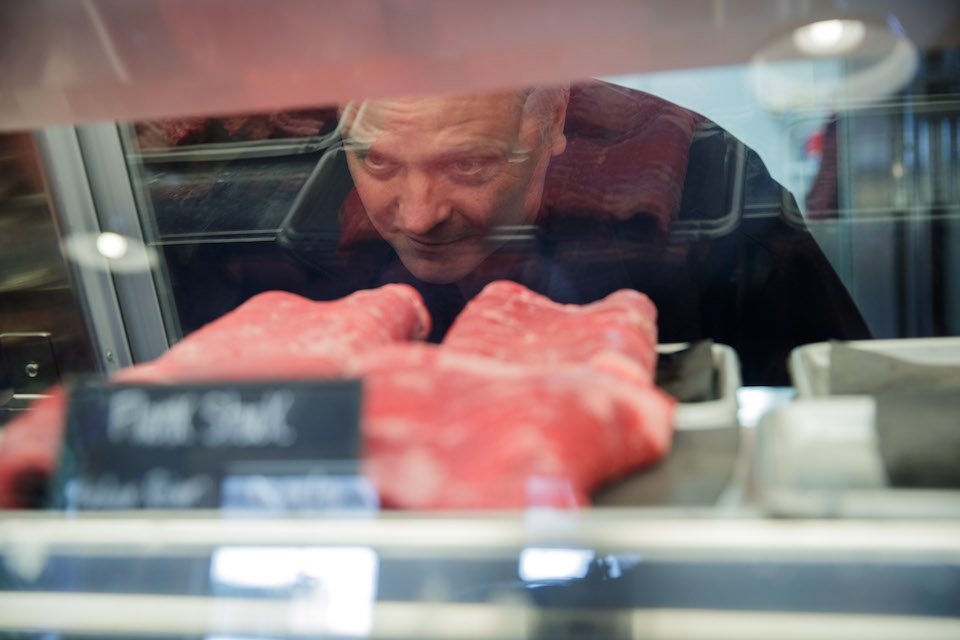
On one side of the Smokehouse workshop, Brody pulled a homemade rub out of a thick plastic bag and slathered it over slabs of beef. This recipe comes from a three-ring binder and two generations before them. Treating it as a classified document of trade secrets, he takes the recipe book home with him every night. “Once you get what the general population likes, you stay consistent,” he said. “Every step has to be done the same.”



